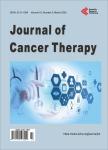Factors Associated with Need for Drainage of Pleural Effusion after Diaphragm Surgery
Factors Associated with Need for Drainage of Pleural Effusion after Diaphragm Surgery作者机构:Athens Regional Health Services Division of Gynecologic Oncology Department of Obstetrics and Gynecology University of Georgia/Georgia Regents University Athens USA
出 版 物:《Journal of Cancer Therapy》 (癌症治疗(英文))
年 卷 期:2014年第5卷第7期
页 面:680-684页
学科分类:1002[医学-临床医学] 100214[医学-肿瘤学] 10[医学]
主 题:Pleural Drainage Diaphragm Surgery Ovarian Cancer
摘 要:Background: Diaphragm surgery is common with advanced ovarian malignancies. The purpose of this study is to determine associated factors with the need for drainage of pleural effusion after diaphragm surgery. Methods and Materials: A retrospective chart review was undertaken in all women undergoing debulking surgery for stage IIIc/IV ovarian cancer from 2007-2009. Results: One hundred and eight patients were found to be eligible for the study, but 73 were the primary focus of this paper due to having undergone debulking surgery, including diaphragmatic surgery, from 2007-2009. All 73 had ablation with the argon beam coagulator, 7 had a full thickness resection, and 7 had extensive peritoneal peel. Five patients had preoperative effusions. Only 7 patients required chest drainage postoperatively. Pre-operative ascites correlated closely with postoperative effusion (p-value = 0.031) but not with drainage (p-value = 0.068). The mean age of patients requiring drainage was significantly older (73 years) than that of patients who did not require drainage (60 years) (p-value = 0.002). Conclusion: Older patients undergoing diaphragm surgery are more likely to require chest tube or thoracentesis due to concurrent symptoms. Pre-operative ascites correlates closely with the development of postoperative effusion after diaphragm surgery.



